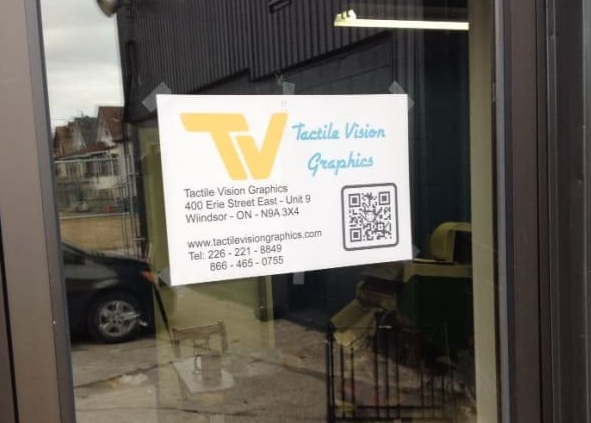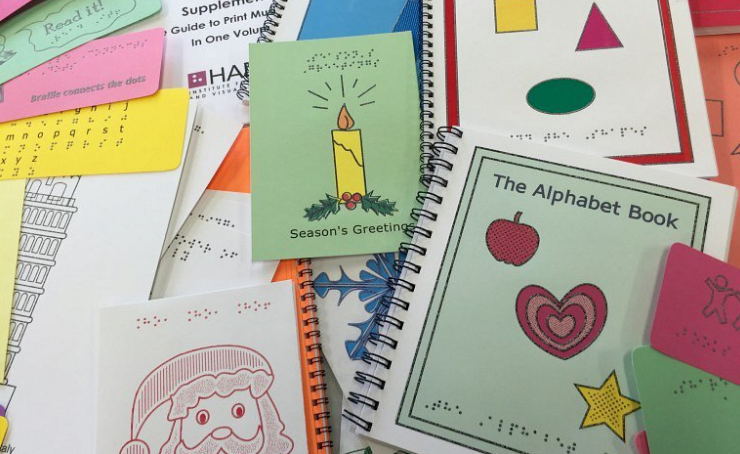Back Tactile Vision Graphics’ Campaign on Indiegogo Now to Further Accessibility for All with First Braille-Friendly 3D Printer
 It would certainly be great if we could all follow that ‘how to start a new business’ rule book and begin with that luxuriously and ever-so-perfect formula, possessing a plump bankroll of starting capital, all the right tools, and enough help to delegate work so that you aren’t falling asleep in your lunch; however, that’s very often not the case for entrepreneurs who are willing to take the risk without the big bucks, jump in, and amp up the sweat equity.
It would certainly be great if we could all follow that ‘how to start a new business’ rule book and begin with that luxuriously and ever-so-perfect formula, possessing a plump bankroll of starting capital, all the right tools, and enough help to delegate work so that you aren’t falling asleep in your lunch; however, that’s very often not the case for entrepreneurs who are willing to take the risk without the big bucks, jump in, and amp up the sweat equity.
Work is exponentially more motivating and fulfilling, no matter the phase your business is in, when you are helping others. For Rebecca and Emmanuel Blaevoet, creating their graphics art and braille services business was a sure labor of love, beginning in the UK as newlyweds with their greatest assets being each other, their expertise, and two older desktop computers. With plenty of obstacles and opposition along the way, from visas and governmental rules and delays to a serious lack of encouragement from those who didn’t see any sort of market for braille, the couple—with that true entrepreneurial spirit—persisted—and have already expanded. And they continue to have a firm desire to do everything on their own without bringing an investor into the company—or spending money they don’t have, as is certainly the way for many individuals and businesses today.
“We seem to start every big task with a great idea and no capital,” says Rebecca. “We figured we could start our British company with our ancient computers; my husband designed our first website and I began transcribing braille using my old clunker of an embosser. Gradually, organically, we acquired braille embossers, we invested in a machine that produces tactile graphics and began to produce in volume.”
“I think the myth is that you need state-of-the-art hardware in order for a business to succeed. Granted, it makes things easier, but ultimately, if you’re not willing to put long hours in, it doesn’t matter how much of a bank loan you took out, the business will fail.”
Today, they are living back in Rebecca’s native Canada, in Windsor. Rebecca is completely blind and has been since birth but that has never stopped the ambitious Canadian, from majoring in Russian and Slavic studies—despite a lack of sufficient study material in braille—to working as a vision rehabilitation teacher and a teacher for the blind in Brantford. As the owners of Tactile Vision Graphics, the two are both able to chase their dreams within their one company. Emmanuel is the graphics designer and Rebecca is the braille expert. Services include everything from greeting cards to textbooks in braille. In her free time Rebecca also lobbies for quality Braille materials and serves on the Braille Literacy Canada Board.
Now, the two are hoping to add another very important tool to their business: a 3D printer. But this machine will need to print in Braille, and while the 3D printing industry seems to offer nearly everything today for the user, that is not something they’ve been able to find.
“Blind people have had to put up with limited or poor-quality alternate formats for years and years,” said Rebecca. “When the idea of 3D printing started to surface at blindness trade shows, my husband seized the opportunity to begin testing the idea of producing braille. We were so excited to see the MakerBot produce dots! They were little cylinders, not the right size, but hey, they were dots. Braille traditionally is produced by hammers punching dots into paper. Those dots are traditionally grouped into cells of six, two across and three down. The dots are rounded and are at a height where they can be easily felt, but not so high that they obstruct your fingers from tracking over them.”
Over recent years, we’ve seen innumerable projects emerge for the blind community, offering everything from better access to artwork and yearbooks to navigational tools such as 3D printed topographical campus maps for students and more urban tools for the visually impaired such as city maps. While many items are easier to make on the broader scale, Rebecca points out that it’s impossible to print true braille on the 3D printers currently available on the market today. If the quality isn’t good, those reading could be completely thrown off.
“That’s the thing about braille,” Rebecca continued. “It must be of a specific size so your fingers can feel an entire cell as they track across a line in a smooth motion. If braille is too small, too tightly compressed, the dots too shallow, it takes an inordinate amount of time to decipher it. We have tested several different 3D printing technologies and found all these things problematic: dots too small, too shallow, too close together, not the right shape. They might be too pointy, too jagged, too square.”
 The only option is to have their own 3D printer engineered from the beginning concept stage to actual manufacturing. This will indeed require funds. To help with that, Rebecca and Emmanuel have launched an Indiegogo campaign in the hopes of raising a modest $15,000 CAD (translated to about $11,500 USD).
The only option is to have their own 3D printer engineered from the beginning concept stage to actual manufacturing. This will indeed require funds. To help with that, Rebecca and Emmanuel have launched an Indiegogo campaign in the hopes of raising a modest $15,000 CAD (translated to about $11,500 USD).
“We have been approached many times over the years to produce signage with braille and raised print,” state the Blaevoets on their Indiegogo page. “3D printing is the logical way to do this. We have been testing 3D printers, looking at the total build size and how they stack up in terms of producing good-quality braille dots.”
“We have come to the conclusion that the size and standard of 3D printer we are looking for does not exist. We have to build it ourselves, if we are going to expand our services to offer 3D printing with Braille labels.”
With only nine days left to go at this time, they still have quite a way to go in terms of reaching their goal. Since they are raising money to make this 3D printer themselves, you can support the campaign by ordering any number of unique items, from a personalized fridge magnet with your name and the full braille alphabet for $25 to purchasing a complete review for your own website for $150 CAD. And in one of the most creative ideas we’ve seen, you can also enjoy the Windsor Tandem Bike Tour for an investment of $3,000 CAD that offers you a flight to Windsor, a chance to meet the team, a picnic, and of course, an awesome bike ride with their Windsor Tandem Cycling Club.
Success on Indiegogo will mean that Rebecca and Emmanuel can get started on creating what will be the ‘first, truly braille-friendly 3D printer ever.’ This will help them not only in their business but in the larger picture for providing reading materials and information for the visually impaired. The end product will be braille and tactile graphics that are easy to read and both thoughtfully created and formatted by Tactile Vision—as they continue in their commitment to ‘bringing braille to everyone.’ Are you backing this campaign on Indiegogo? Let’s discuss further over in the Braille 3D Printer forum over at 3DPB.com.
[Source: Windsorite]Subscribe to Our Email Newsletter
Stay up-to-date on all the latest news from the 3D printing industry and receive information and offers from third party vendors.
You May Also Like
Hyliion CEO Thomas Healy on 3D Printing’s Role in the KARNO Generator
While the electric vehicle (EV) market faces an uncertain future, there’s no uncertainty about the fact that greenhouse gas emissions are drastically changing the climate on Earth. Thanks to its...
Attending the ASTM F42/ISO TC 261 Meetings: The Nitty-Gritty of Additive Manufacturing
I never thought I’d be so excited about an event focused on additive manufacturing (AM) standards, but here we are! When I learned that the recent biannual ASTM F42/ISO TC...
World’s Largest Polymer 3D Printer Unveiled by UMaine: Houses, Tools, Boats to Come
The University of Maine has once again broken its own record by unveiling the largest polymer 3D printer in the world. Surpassing its 2019 achievement, the new Factory of the...
Gorilla Sports GE’s First 3D Printed Titanium Cast
How do you help a gorilla with a broken arm? Sounds like the start of a bad joke a zookeeper might tell, but it’s an actual dilemma recently faced by...































